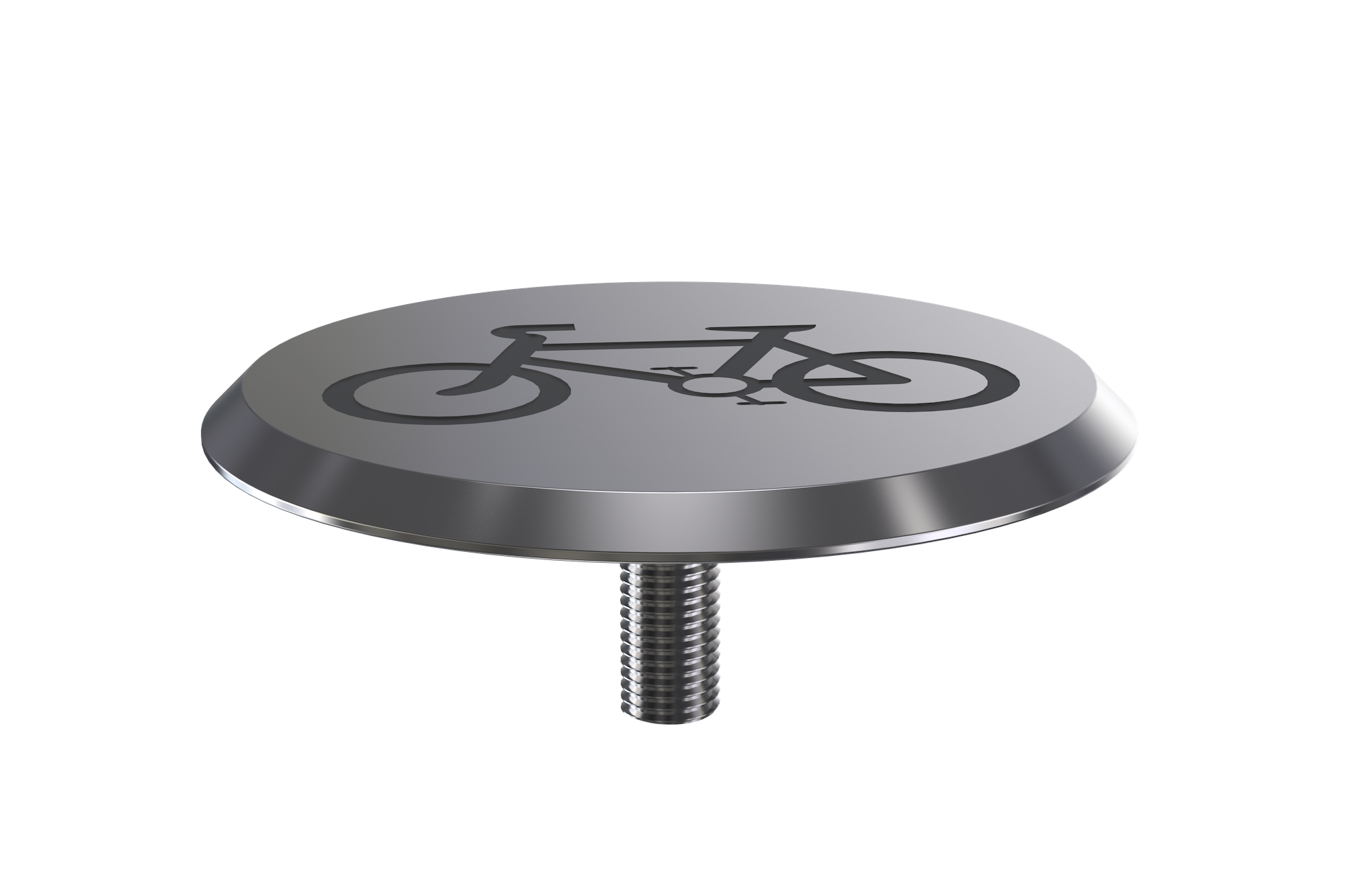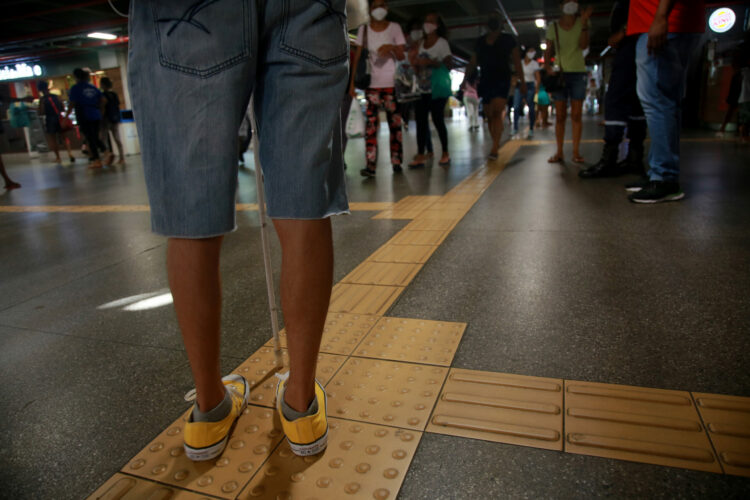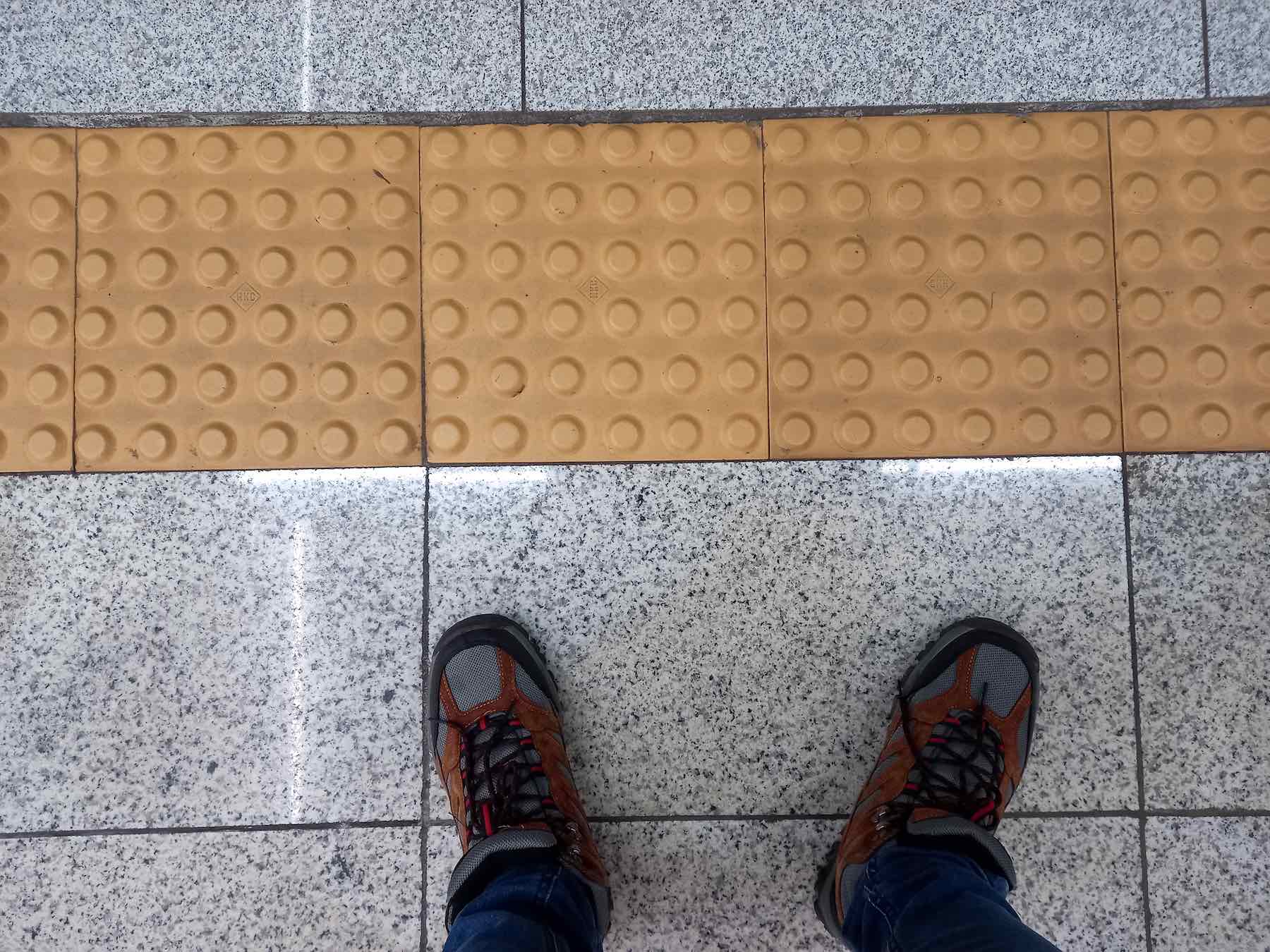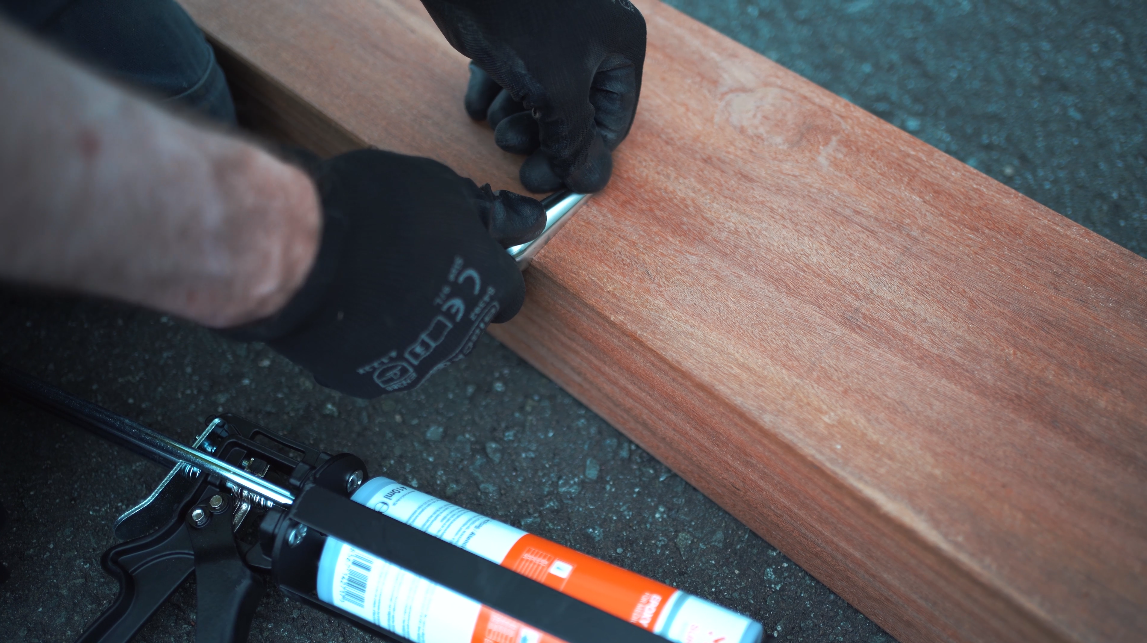Exploring the Different Types of Tactile Paving
Blog
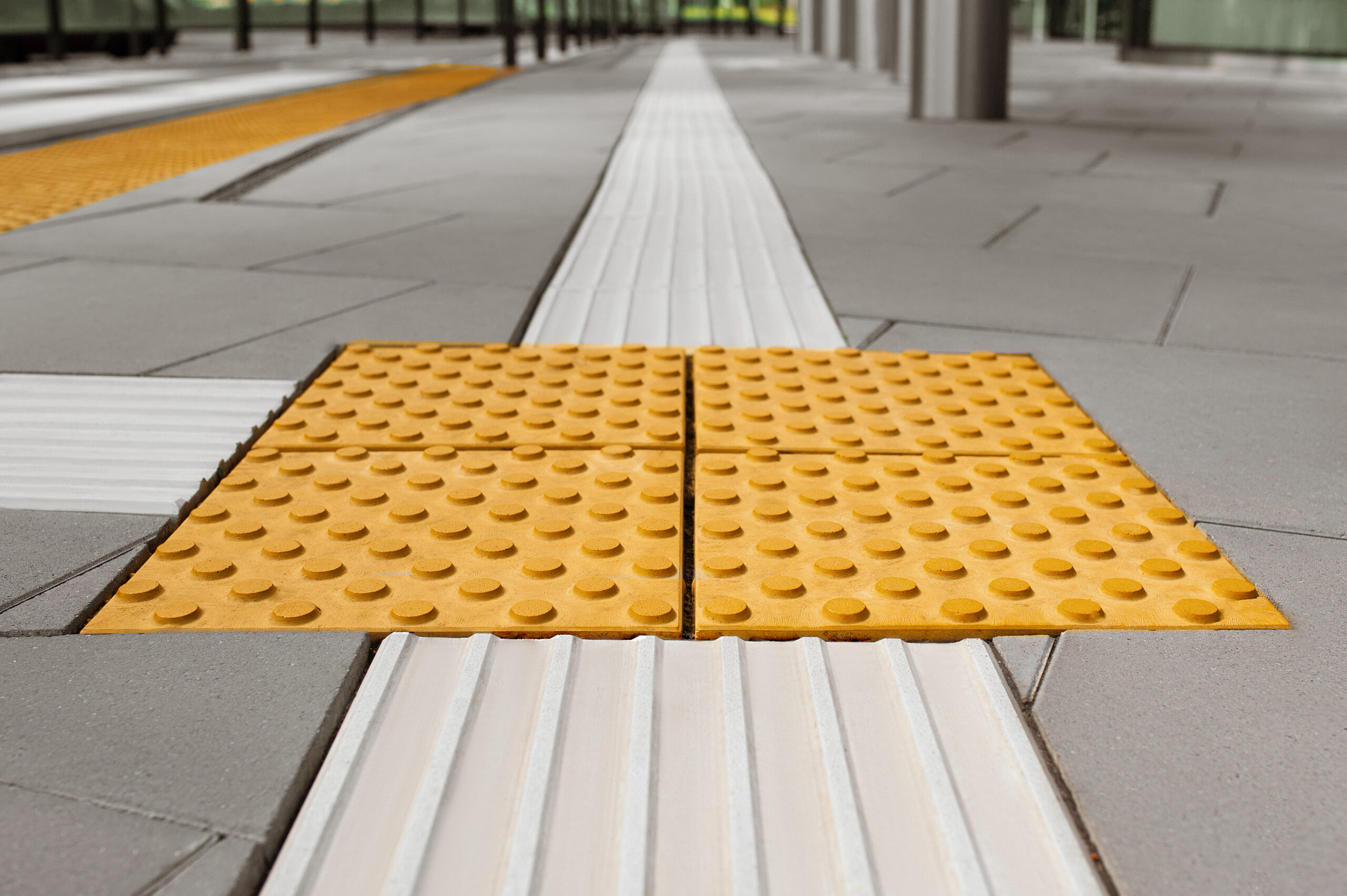

The many faces of tactile paving
Tactile paving, or tactile surface indicators, is an innovation that has transformed the lives of visually impaired individuals, enabling them to navigate public spaces with comfort and safety. This system of textured ground surfaces is made from durable materials like concrete, stone, plastic, and glass reinforced plastic (GRP), ensuring longevity and reliability. Better still, the slip-resistant and low-maintenance design of tactile paving ensures that it is accessible to all, regardless of their physical ability.
The term “tactile” relates to the sense of touch, a sense that allows us to perceive physical sensations through our hands or fingers. Touch plays a vital role in our interaction with the world, and tactile surfaces in architecture facilitate our relationship with our surroundings. Accessible architecture incorporates tactile features that provide essential information and assistance to individuals with visual impairments, encouraging better accessibility within the built environment.
Architecture that is truly accessible doesn’t ignore the little-known language of tactile surfaces. Without the consistent application of tactile paving, those with impaired vision would struggle to do everyday tasks that most people take for granted, such as walking down the street, crossing a road or catching a bus independently.
Who Invented Tactile Paving?
Having positively impacted the lives of so many across the world, it’s only right to mention the inventor of tactile paving. The concept of tactile paving was first introduced by the Japanese inventor Seiichi Miyake in 1965. Miyake’s motivation stemmed from his friend’s vision loss, and he crafted mats with raised shapes to guide him and give back independence. Miyake positively impacted generations of low-sighted individuals that followed.
Tactile surfaces have become global, guiding and safeguarding blind and visually impaired individuals from potential hazards and reducing limitations on their lives.
The Different Types of Tactile Paving
There are various types of tactile paving, each with a unique design and purpose, these are:
- Blister tactile paving
- Offset blister paving
- Corduroy tactile paving
- Cycleway paving
- Directional or guidance paving
- Lozenge paving
In this blog post, we’ll explore each type of tactile paving and what it communicates to visually impaired individuals.
Blister Tactile Paving
Blister paving is a solution that serves multiple purposes with its unique design. Firstly, the textured surface, which is composed of small truncated domes or flat-topped “blisters,” creates a slip-resistant pathway, which minimises accidents for all pedestrians.
However, the most significant objective of blister paving is to indicate pedestrian road crossings, both controlled and uncontrolled. For visually impaired people, the presence of blister paving at crossings enables them to navigate the built environment with more autonomy.
The subtle yet consistent differences in blister paving at controlled and uncontrolled crossings serve a purpose. At uncontrolled crossings, the 6mm blisters indicate where the dropped kerb ends and the road begins.
At controlled crossings, the blister paving extends across the full width of the crossing, leading up to the kerb end. This not only helps visually impaired pedestrians but also guides partially sighted pedestrians towards the crossing point, enhancing their safety.
For those who are partially sighted, colour also plays a big role when it comes to navigation, as it is a point of reference that they can engage with. Blister paving used at controlled crossings is typically coloured red, setting it apart from regular paving and making it easily distinguishable.
There is no denying that blister paving is integral for communicating to partially sighted and blind people where the pavement ends and the road begins, minimising the likelihood of them unknowingly stepping out into the road.
Blister paving is available in various materials such as concrete, stone, or rubber for creating the bumps. Of course, the choice of material depends on factors like desired aesthetics (although this certainly shouldn’t be the leading factor), slip resistance requirements, and climate conditions of the installation area.
With its multifunctional design and diverse material options, blister paving ensures better pedestrian safety for everybody.
Offset Blister Paving
Offset blister paving is an equally important secondary type of blister paving that offers a unique and natural look to surfaces. The raised bumps in an offset arrangement create a random pattern compared to traditional blister paving with its regular square pattern.
Offset blister paving gives more freedom to travel on public transport to the visually impaired. Often found at train stations, tram platforms, and tube stations, offset blister paving is a crucial warning system to avoid the platform edge.
In 2020, Cleveland Gervais, who was visually impaired, was fatally struck by a train after falling from a station platform which didn’t have tactile paving. The omittance of tactile paving is not uncommon, with nearly 40% of UK train stations failing to incorporate it. Following the incident and tireless campaigning by RNIB and Guide Dogs for the Blind, the government has provided Network Rail with £75m to complete the installation of warning tactile paving on outstanding station platforms by 2025. That means offset blister paving will have a bigger presence within our public spaces.
The great thing about investing in offset blistered paving is its durability. The staggered arrangement of the blisters evenly distributes weight and pressure across the surface, keeping maintenance and the longer term costs to a minimum. Just like standard blister paving, offset blister surfaces can be made from a variety of materials, including concrete, stone, or rubber, giving you the flexibility to choose the right material for your needs. With its unique pattern, durability-enhancing design, and versatility in material choices, offset blister paving creates safe, visually appealing, and long-lasting surfaces.
Corduroy Tactile Paving
In town centres and shared spaces, seemingly irrelevant features – such as a step or a crossing – can be a huge barrier for the visually impaired. Corduroy tactile paving, also known as hazard-warning paving, is another essential tool. Corduroy tactile paving warns partially sighted people to proceed with caution, indicating that they are about to come across a hazardous area or edge.
Characterised by a series of raised bars arranged in a pattern much like corduroy fabric, hence its name. Corduroy tactile paving is designed with precision and the spacing and size of the raised bars vary depending on the location and intended use. However, they are regulated by accessibility standards to ensure much needed consistency.
The distinct pattern of corduroy tactile paving is commonly used to mark the presence of pedestrian crossings, stairs, or escalators. It can also serve as a warning for visually impaired individuals and other pedestrians when approaching on-street tram lines, or, transitioning from footways to shared areas.
The application of corduroy paving prevents many accidents and injuries. The presence of corduroy paving makes public spaces more accessible and inclusive for everyone, contributing a positive impact on communities.
Cycleway Paving
It’s not just motorised vehicles that pose a risk to visually impaired individuals. Cyclists, particularly on shared footpaths, can cause unease.
Cycleway tactile paving marks the beginning and end of shared pedestrian cycle routes, giving more confidence to the visually impaired and alerting them to the presence of cyclists. The false curb created by the central delineation strip assists visually impaired pedestrians to stay on the correct side of the pathway, prioritising safety.
In situations where cycleways and footpaths run alongside each other, cycleway paving goes the extra mile by providing differentiation through the direction of the flat bars, running from side to side. This thoughtful design ensures clear visibility and ease of use for all users.
The presence of tactile cycleway paving is good news for cyclists. The slip-resistant surface of cycleway paving enables cyclists to maintain control even in wet or icy weather, reducing accidents. Durable and built to withstand regular use and the weight of bicycles and equipment, tactile cycleway paving is a long-lasting solution that aids everyone.
As a proponent of safe and sustainable transportation, cycleway paving promotes dedicated and easily identifiable spaces for both cyclists and pedestrians, creating accessible and user-friendly shared pathways.
Directional or Guidance Paving
Directional or guidance paving is a game-changer when it comes to improving accessibility in public spaces.
With their round-ended bars laid in the direction of safe travel and corners indicating changes in direction, these cues are a reliable guide for people, including visually impaired pedestrians, in navigating open areas and avoiding potential hazards.
Bustling squares or vibrant plazas can be overwhelming spaces if you’re partially sighted or blind. Directional or guidance paving gives both physical and visual alerts, ensuring clear and easily identifiable routes for pedestrians with visual impairments. It’s a small yet significant step towards creating inclusive environments that can be navigated with confidence.
Lozenge Paving
For most people living with a visual impairment, public transport is the only means they have to make journeys around the country. Yet, accessing public transport safely and distinguishing tram and bus stops, continues to be a huge challenge for someone with sight loss.
Lozenge tactile paving is another innovative solution that is gaining momentum in many major cities across England, Wales, and Scotland. Designed to warn visually impaired individuals they’re approaching the edge of on-street light rapid transit (LRT) platforms, lozenge paving consists of 6±0.5 mm high rounded-edged bar lozenge shapes that are installed a safe distance away from the edge of the track. This attention to detail helps pedestrians stop at a safe distance, preventing any potential trip hazards. With expanding tram networks and the focus on making bus stops more disability-friendly, lozenge paving is becoming a prominent feature in our streets, contributing to accessible architecture.
The 6 different types of tactile paving represent an essential innovation in modern, accessible infrastructure. These solutions prioritise safety and accessibility while also promoting inclusive design in our built environment. The impact of these products on the lives of visually impaired individuals is profound, empowering them to navigate public spaces with greater independence and autonomy. By investing in inclusive design, we are creating a society that values the needs and abilities of all its members.
Need help choosing the right tactile paving, studs or strips for your project? Speak to the team today and call 01686 689 198 or email [email protected].

